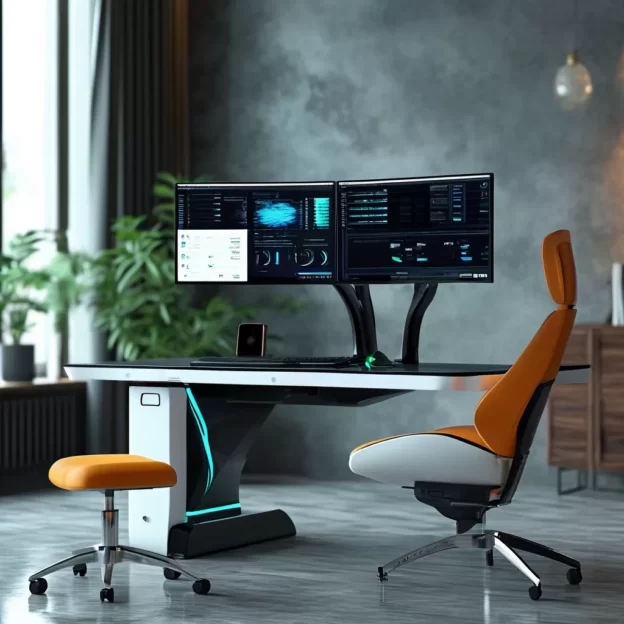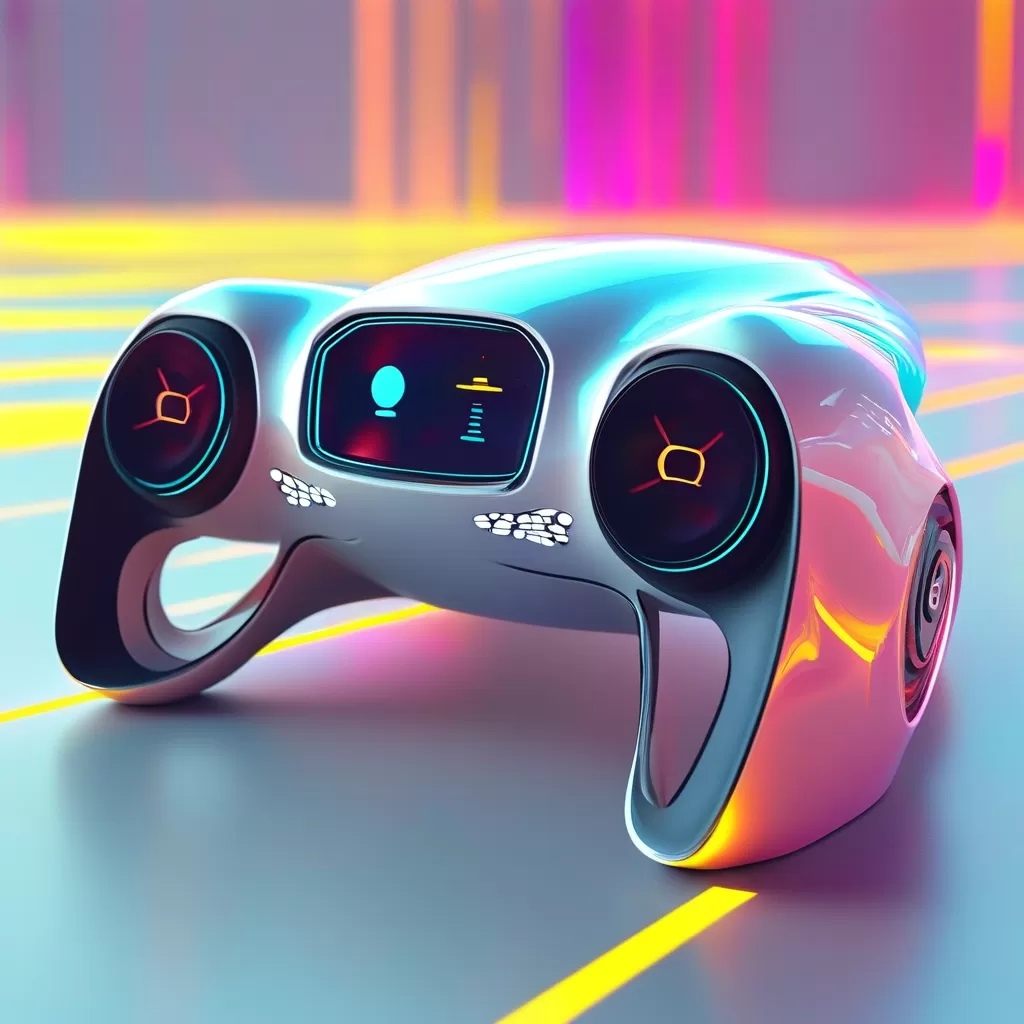The Revolutionary Power of Haptic Feedback: Elevating Your Digital Experience
Imagine interacting with your smartphone, feeling a subtle vibration confirm a text message, or experiencing the satisfying click of a button on a touchpad, all without looking. Or picture yourself immersed in a video game, feeling the recoil of a virtual explosion or the texture of a character’s sword in your hand. These aren’t just figments of a futuristic dream; they are the tangible results of haptic feedback technology. Beyond simple notifications, haptic feedback is rapidly evolving from a novelty feature into a fundamental component that reshapes how we perceive and interact with the digital world, offering a level of immersion and realism previously confined to science fiction.
Understanding Haptic Feedback: More Than Just Buzzing
At its core, haptic feedback, often shortened to “haptics,” refers to the use of touch and vibrations to communicate sensations or feelings to a user. It provides a more immersive and intuitive experience by simulating the sense of touch through technology. The term encompasses a broad range of techniques, from simple vibrations in a phone vibrate function to sophisticated systems that mimic the feeling of different textures, forces, and even temperature changes.
Technically, haptic feedback systems generate controlled physical responses, typically vibrations, forces, or motions, using actuators (small motors or devices) embedded within devices. These actuators are triggered by software algorithms to produce specific patterns, frequencies, and intensities of vibration. The goal is to create a feedback loop where the user’s action or the device’s event is accompanied by a corresponding tactile sensation. This goes beyond the basic “click” or “double-tap” feedback found in older devices. Modern haptic technology, like the Taptic Engine used by Apple, employs advanced actuators capable of producing a wider range of nuanced vibrations, mimicking different textures or even slight movements.
The science behind haptics leverages our highly sensitive tactile system, which includes touch receptors in our skin capable of detecting pressure, vibration, temperature, and pain. By strategically stimulating these receptors with carefully designed vibrations, haptic feedback systems can convey complex information or enhance the feeling of interaction. For instance, the vibration pattern for receiving an email notification is distinct from the one signaling a low battery or a security alert, allowing users to intuitively understand the context without visual confirmation.
Ubiquitous Haptics: From Smartphones to Gaming and Accessibility
While the potential applications are vast, haptic feedback is already deeply integrated into our daily lives, primarily through mobile devices. The humble smartphone vibrate function is the most common example, but its role has evolved significantly. Early phone vibrations were simple, single-frequency alerts. Today, smartphones use sophisticated haptic engines to provide contextual feedback. Typing on a virtual keyboard feels like pressing physical keys, app icons offer distinct feedback when selected, and notifications can be tailored to feel different based on their importance or type. This constant, subtle communication enhances usability, confirms actions, and provides a more satisfying user experience.
The impact of haptics extends far beyond communication. In the world of gaming, haptic feedback transforms gameplay. Controllers equipped with advanced haptics can simulate the rumble of an engine, the impact of a collision, the texture of a surface being explored, or even the feeling of rain on a character’s skin. This level of immersion makes virtual worlds feel more real and engaging, heightening emotional responses and making the gaming experience more memorable. Racing games feel faster, action games feel more intense, and puzzle games offer tactile clues that enhance problem-solving.
Furthermore, haptic feedback plays a crucial role in accessibility. For visually impaired users, haptic cues provide vital information that visual alerts cannot. From confirming website navigation on a screen reader to signaling incoming calls or messages, vibrations offer an independent way to interact with technology. Similarly, haptic feedback can assist users with cognitive impairments by providing clear, non-visual feedback for tasks or alerts.
Looking ahead, the integration of haptics into wearable technology is set to revolutionize fitness and health tracking. Smartwatches and fitness bands could provide tactile feedback to guide users during workouts, alert them to heart rate zones, or even offer subtle reminders to move throughout the day. In the automotive sector, haptic feedback systems could enhance safety by vibrating steering wheels or seats to warn drivers of potential collisions or blind spot dangers, potentially reacting faster than visual or auditory alerts.
Emerging Technologies: Beyond Touchscreens and Gamepads
The current wave of haptic innovation is pushing boundaries far beyond simple vibrations. Researchers and engineers are developing technologies that promise even more realistic and nuanced tactile experiences.
Electrostatic friction (ESK) technology, explored by companies like Tesla, aims to simulate the feeling of physically touching different textures. By applying localized electrical charges to a surface, ESK can create the illusion of friction, allowing users to “feel” virtual textures on touchscreens or interactive displays. This could fundamentally change how we interact with digital interfaces, making web browsing, reading documents, or even designing objects feel more tangible.
Haptic gloves and suits are another frontier. These wearable devices, equipped with numerous small actuators, can stimulate different parts of the hand and body, allowing users to feel virtual objects and environments with unprecedented fidelity. This technology is crucial for the future of virtual reality (VR) and augmented reality (AR), enabling users to “feel” virtual props, tools, or even simulated physical interactions within a digital space. Imagine feeling the weight of a virtual sword in your VR game or the texture of a virtual sculpture you’re designing.
Advanced Haptic Feedback Systems are also finding their way into industrial and medical applications. Technicians using AR glasses could receive tactile feedback indicating the torque applied during a delicate repair, ensuring precision. Surgeons using haptic-enabled surgical simulators can practice procedures with realistic tactile feedback, improving training without risking patient safety. Even in the entertainment industry, haptic feedback is being integrated into theme park rides and interactive installations to create more immersive and responsive experiences.
These emerging technologies represent a shift from simple notification buzzes to sophisticated tactile interfaces that communicate complex information and enable entirely new forms of interaction. The goal is to bridge the gap between the digital and physical senses, making virtual experiences indistinguishable from reality for many purposes.
The Future Implications and Challenges
The revolutionary power of haptic feedback lies in its potential to fundamentally change human-computer interaction. By engaging our sense of touch, a crucial sense often overlooked in purely visual or auditory interfaces, haptics adds a new dimension to digital experiences. It promises increased efficiency, safety, accessibility, and most importantly, immersion and presence.
In the future, we might interact with computers and devices not just by looking at screens and clicking buttons, but by feeling them. Imagine navigating a complex software interface through tactile menus, feeling virtual buttons depress, or receiving detailed information conveyed through patterns of vibration. Haptic feedback could also play a significant role in remote manipulation, allowing operators to feel what their robotic hands touch, enhancing telemedicine, remote construction, or deep-sea exploration.
However, the widespread adoption and evolution of haptic technology face challenges. Designing effective haptic feedback requires sophisticated software and careful consideration of user experience design – deciding *what* feedback to provide, *when*, and *how* it should feel. Overly simplistic or distracting vibrations can be annoying, while overly complex ones might confuse users. Manufacturers must also balance cost and power consumption, as sophisticated haptic systems can be energy-intensive. Furthermore, developing standards for haptic feedback across different devices and platforms is still an ongoing process.
Conclusion: Touching the Digital Future
From its humble beginnings as a simple vibration alert to its current status as a sophisticated sensory technology, haptic feedback has come a long way. It is no longer just a gimmick but a powerful tool that enhances user interaction, improves accessibility, and creates deeply immersive experiences in gaming, VR, and beyond.
The technology’s journey is far from over. As innovations like electrostatic friction, advanced haptic suits, and more nuanced actuator systems continue to develop, the line between the digital and physical worlds blurs even further. Haptic feedback is poised to become an indispensable part of our daily lives, enriching our digital experiences in ways we are only beginning to imagine. It is a silent revolution, one that speaks through touch, fundamentally changing how we engage with the technology that increasingly shapes our world.
The power of haptics lies not just in replicating touch, but in redefining it, elevating our digital interactions from visual spectacles to multi-sensory realities. The future is tactile, and haptic feedback is leading the charge.



